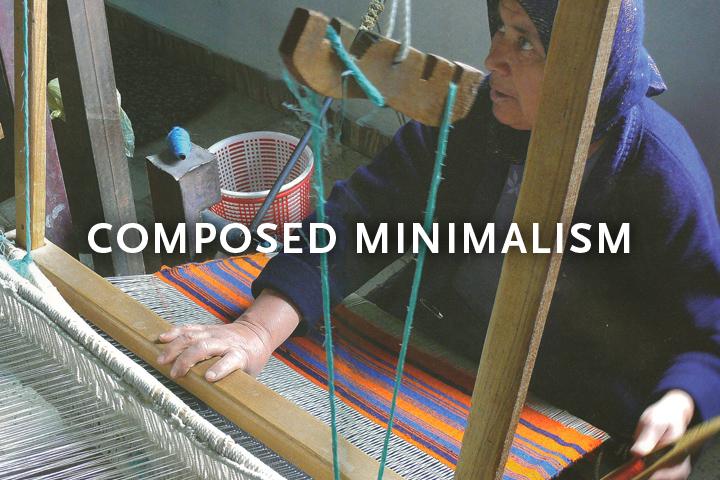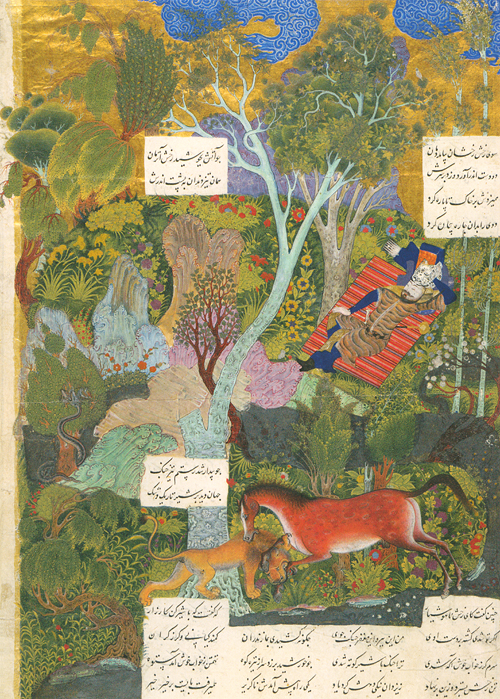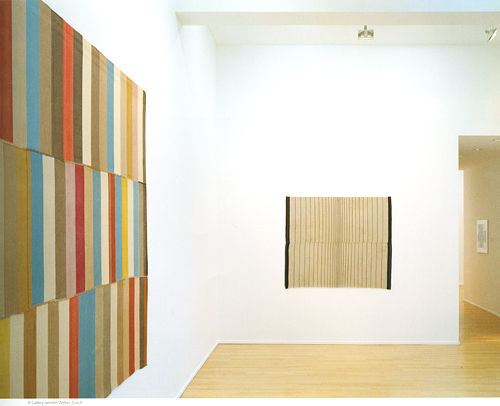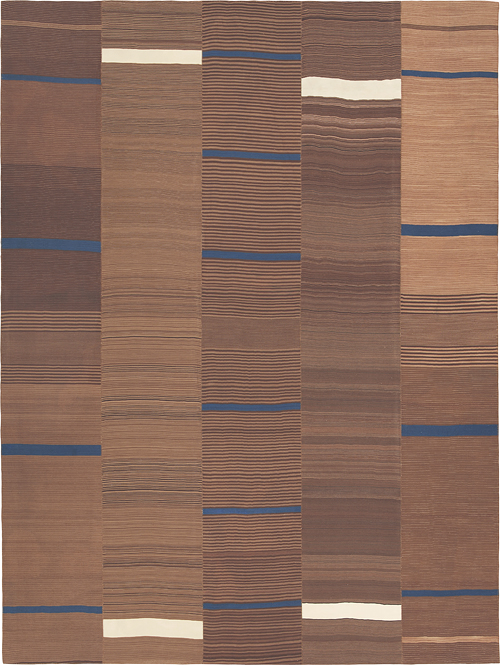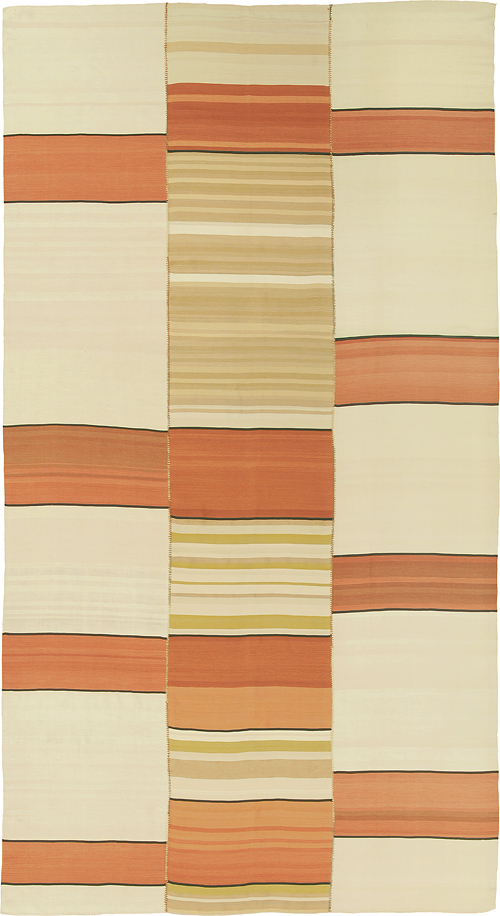Hezar Jerib kilims are deceptively simple. The constrained designs of wide or narrow stripes, most often in subtle monochromes, are achieved using particularly lustrous and supple handspun wool from mountain sheep. The unique dyes are made from local plants and insects, using recipes that have been passed down for generations, and create a beautiful variety of muted yet deep and rich natural tones.
Tanavoli, Parviz. Undiscovered Minimalism: Gelims from Northern Iran. Zurich: Werner Weber. 2011. 24.
Another distinctive feature of these refined constructions is the subtle color transitions that add depth and visual interest and generate a remarkable dynamism and complexity that complements the minimal compositions. This visual subtlety has led artists and scholars to compare the weavings to the Color Field painting of 20th-Century artists such as Mark Rothko and Barnett Newman.[1] In fact, Hezar Jerib kilims have been hung in European art galleries as “undiscovered minimalism” and continue to be recognized as works that share the subtlety and craft of the finest examples of postwar Modernism. They are masterpieces of serene and substantial beauty.
And yet the origin of these kilims is far removed from the international art world.
The panels were woven in the remote mountainous district of Hezar Jarib, in the Mazandaran province on the southern shores of the Caspian Sea in northern Iran. This region has remained unchanged for centuries, with villagers living as their ancestors did millennia ago. Due to the remoteness of the region, the weaving tradition has had a separate development, both aesthetically and technically, than other Persian kilim traditions. The geographical isolation means that the weavers must make do with their limited resources. This is an art of aesthetic and material economy.
Tanavoli, Parviz. Undiscovered Minimalism: Gelims from Northern Iran. Zurich: Werner Weber. 2011. 21.
The weavers are the women of the village who were taught the ancient techniques and traditions by their mothers and grandmothers; these kilims reflect the symbiotic relationship between the people of this remote region and nature. The weavings goes back to at least the 10th Century, when Hezar Jerib kilims were mentioned in a Persian geography book. The British Museum possesses a 16th-Century painting depicting Rostum, the hero of the epic Persian poem the Shahnameh, asleep in the forests of Mazandaran on a kilim with a typical Hezar Jarib striped pattern.
Every step in the creation of the kilims is carefully controlled, starting with the spinning of the wool. The fleece of Hezar Jerib sheep is exceptional for its luster and softness. The finest fibers are saved for these kilims, while the lesser quality wool is felted and used for more everyday purposes. It is then dyed with ancient techniques that produce truly exceptional color, and only the indigo and one shade of madder red are bought at the market. One can see the effect of the small dye batches in the subtle abrash effect, the term for the natural color variations that appear in small batches of naturally dyed wool. Abrash is one of the characteristics most appreciated by connoisseurs of carpets and textiles—small dye lots create variety, complexity, and richness that simply cannot be matched or imitated by industrial products. These enchanting imperfections express the authenticity and subtle beauty of the kilims.
14 ft. 7 in. x 10 ft. 11 in.
The kilims are patiently woven on looms in village homes, in a weft-faced weave in the monochrome, various stripe, and ikat-style patterns. Typically the areas of color shift from one color to another at irregular intervals, sometimes with a fuzzy transition that imitates ikat, or with occasional dramatic, austere stripes. The finished kilim panels, narrow in width, are stored in rolls that can be cut and sewn together lengthwise according to the needs of the household, most typically as bed and floor coverings. F. J. Hakimian’s Composed Minimalism collection continues this tradition by offering made-to-order assemblages of kilim panels.
Already appreciated for centuries, this style of kilim is a unique marriage of rustic, authentic and earthy art with constraint and refinement. Together these elements make works that harmonize perfectly with the most sophisticated 21st-Century interiors and collections.
12 ft. 11 in. x 6 ft. 11 in.
[1]Tanavoli, Parviz. Undiscovered Minimalism: Gelims from Northern Iran. Zurich: Werner Weber. 2011.
